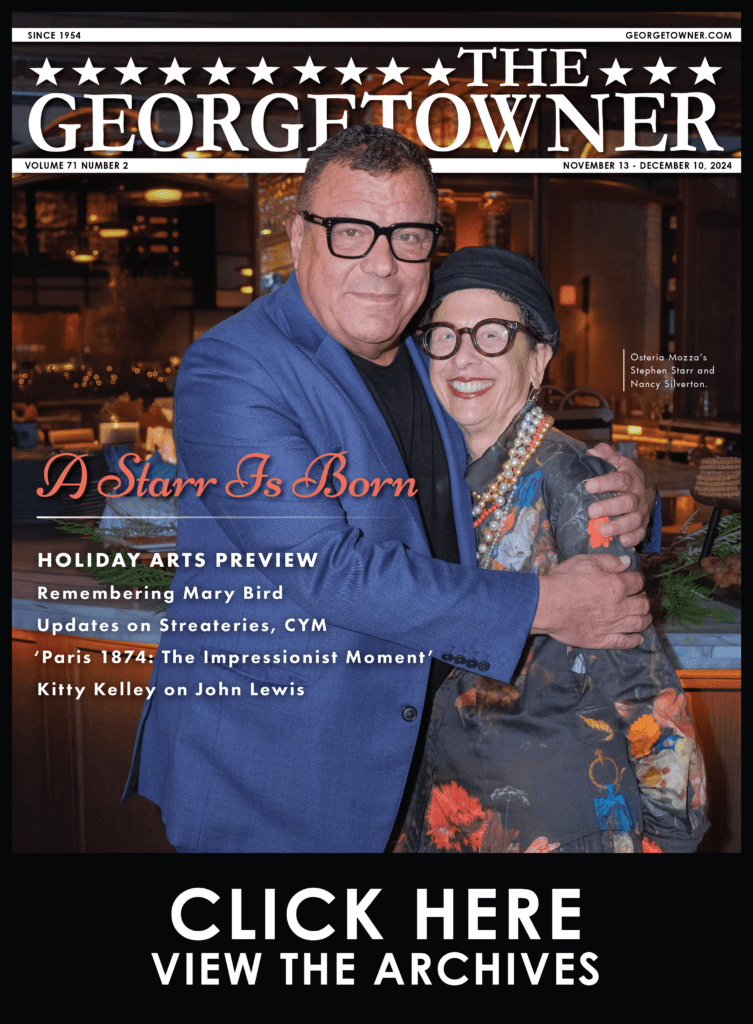‘Let Freedom Ring’: the Measure of the March on Washington
By • August 22, 2013 0 1251
Our whole city will be celebrating Aug. 28, when thousands are expected to converge on the National Mall to celebrate, remember and commemorate the 1963 March on Washington, the march that saw the leaders and participants in a rising civil rights movement come together nearly 300,000 strong to demand justice and jobs.
The march will also always be remembered for Dr. Martin Luther King, Jr.’s “I Have a Dream” speech, oratory that reached the mountaintop of measured, stirring rhetoric, a visionary epic dream of that our better angels would finally come to achieve equality for all in America.
The people who came to Washington were famed and courageous pioneers in the movement. They were labor leaders, they were workers and those without jobs. They were African-Americans–or Negroes as in “The Negro is still not free,” as declared by King. They were politicians, organizers, movie stars and singers. It might be remembered and even recreated in its spirit. As an event, it was one-of-a-kind, never to be seen or heard again.
If you weren’t there or if you won’t be here for the 50th anniversary celebrations, you could do worse than pick up “Let Freedom Ring: Stanley Tretick’s Iconic Images of the March on Washington,” written by Kitty Kelley, the Georgetown author known for her large-scale, controversial biographies of the likes of Nancy Reagan, Frank Sinatra, the Bushes, the Royal Family, Jackie Kennedy and Oprah Winfrey.
“Let Freedom Ring” is the second book Kelley has produced after she discovered a treasure drove cache of photographs in a trunk left by her friend Stanley Tretick, a noted photographer and photojournalist who covered the White House, politics, wars and the civil rights movement. She had already provided the prose and background for a book on Tretick’s iconic photographs of John F. Kennedy, many of which were done for Look Magazine and amounted to a chronicle of the Camelot years.
“Let Freedom Ring” is an entirely different book, although the structure and process is the same. It’s a kinetic look at the march, but also a chronicle of the civil rights movement and its leaders, more journalistic in nature, a kind of documentary that appears to be without style or guile. If you have that wish of having been at the march, this is as close as you can get, perhaps accompanied by YouTube clips of the speech, the gathering or the singing of Joan Baez.
“The government, the Kennedys were very much afraid that there would be real violence and demonstrations,” Kelley told us. “They had set a curfew. They were going to make sure that nothing like that happened. And when it didn’t happen, I think they got some very different notions about the march, about King and about the fight for civil right.”
“Stanley was right in there, chronicling the whole thing,” she said. “He had a front row seat, and he had a lot of empathy for the march. From that day, and I think the pictures show this, the movement picked up visibility all across the nation, and these pictures and others helped do that. This was about the power of people coming together, about non-violence.”
Images of violence–not of the civil rights participants and leaders–but their opponents throughout the south, including the infamous Bull Connors in Alabama and the murder of Medgar Evers in Mississippi had already had their effects in forcing the whole country to look at what was happening. The march, with its images of thousands singing, marching, swaying and listening to King’s gospel-like speech, added to the impetus.
These are not great pictures. They’re something better than that. There are thousands of images that exist of the march. Tretick’s photos have the look of news, of in the moment. They are faces caught up close. They show the multitudes carrying a message or rather hundreds of messages. Then, as now, it wasn’t just about justice, but: “We march for Jobs for all now!” and “We march for first class citizenship now!”
This is what you see in the images of “Let Freedom Ring”: men in suits, holding hands locked in unanimity, Roy Wilkins, Walter Reuters, religious leaders, priests and rabbis, members of the so-called Big Ten, including Whitney Young of the Urban League, authors like James Baldwin (“Go Tell It On The Mountain” and “Another Country”). The headline from the local Afro American is here: “We Shall Overcome! 200,000 Voices Will Be Heard.”
Some of the best shots are those of the thousands sitting by the Reflecting Pool, barefoot in the water, or mingling thickly on the steps leading up to the Lincoln Memorial.
The photos–and the text by Kelley, and the many verbatim speeches, including the King speech–appear both direct and art-free and all the more powerful for their modest qualities. They seem true, like the perfect music that accompanies a wedding, a solemn moment.
Reading, leafing through the book cause a kind of flashback to where one might never have been. Still, something stirs, you hear the raspy voice of Dylan, the crystal clear voice of Baez, the thousands singing ‘We Shall Overcome.”
The major civil rights legislative actions were yet to come, and King would live to see that, even if Kennedy did not.
The struggle in a way had begun for real at the steps of the Lincoln Memorial. Kitty Kelley, for ensuring that Tretick’s photographs would be seen in this powerful way, is to be commended. And we are all the better for that and plan to be at the anniversary events here next week.
So should you.

